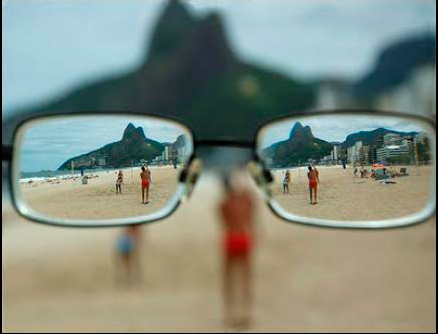
Please wait...

Please wait...
Anomaly or defect of the eye that produces a blurred or unclear vision of distant objects; It is due to an excessive curvature of the lens that causes the images of the objects to form a little before reaching the retina.
Myopia is a type of common refractive error in which nearby objects are clearly visible but distant objects are blurred.
The cornea and the lens deflect (refract) the rays of light that come in so that they focus precisely on the retina in the back of the eye.
High myopia is a severe form of myopia. In high myopia, the eyeball stretches and becomes very long. This can lead to holes or tears in the retina and can also cause retinal detachment. Abnormal blood vessels can grow under the retina and cause changes in vision. People with high myopia need more frequent eye exams with dilated pupils. Early detection and timely treatment can help prevent vision loss.
Refraction occurs when the light changes its direction as it passes through one object to another. Vision occurs when the rays of light deviate (are refracted) as they pass through the cornea and lens. This light is then focused on the retina. The retina transforms light into electrical impulses that are sent to the brain through the optic nerve. The brain interprets these messages, making them the images we see.
When there is a refractive error, the shape of the eye prevents the light from focusing on the retina. The length (length) of the eyeball (shorter or longer), changes in the shape of the cornea or deterioration of the lens, can cause refractive errors.
Myopia occurs in eyes that focus the images in front of the retina instead of on the retina. This can result in blurred vision. It occurs when the eyeball is too long and prevents the incoming light from focusing directly on the retina. It can also occur when the cornea or lens is abnormally shaped.
Myopia can affect both children and adults. It affects about 25 percent of people in the United States. Myopia is frequently diagnosed in children between 8 and 12 years of age. It can get worse during adolescence. Few changes may occur between the ages of 20 and 40, but sometimes myopia can get worse with age. People whose parents have myopia may be more likely to suffer from this condition.
Some of the signs and symptoms of myopia include:
An eye doctor can diagnose myopia and other refractive errors during a complete eye exam with dilated pupils. Many times, people with this condition go to their eye doctor with complaints of visual discomfort or blurred vision.
Myopia can be corrected with glasses, contact lenses or surgery.
Glasses are the simplest and safest way to correct myopia. Your eye doctor may prescribe lenses to correct the problem and maximize your vision.
Contact lenses work by becoming the first refractive surface for light rays entering the eye. This results in a refraction or a more precise approach. In many cases, contact lenses provide clearer vision, a wider field of vision and greater comfort. They are a safe and effective option if they fit and are used correctly. However, contact lenses are not the best option for all people. Talk to your eye doctor to see if contact lenses are an option for you.
Refractive surgery is intended to permanently change the shape of the cornea to improve refractive vision. Surgery may decrease or eliminate the need to wear glasses and contact lenses. There are many types of refractive surgeries. Surgery options should be discussed with an eye doctor.
